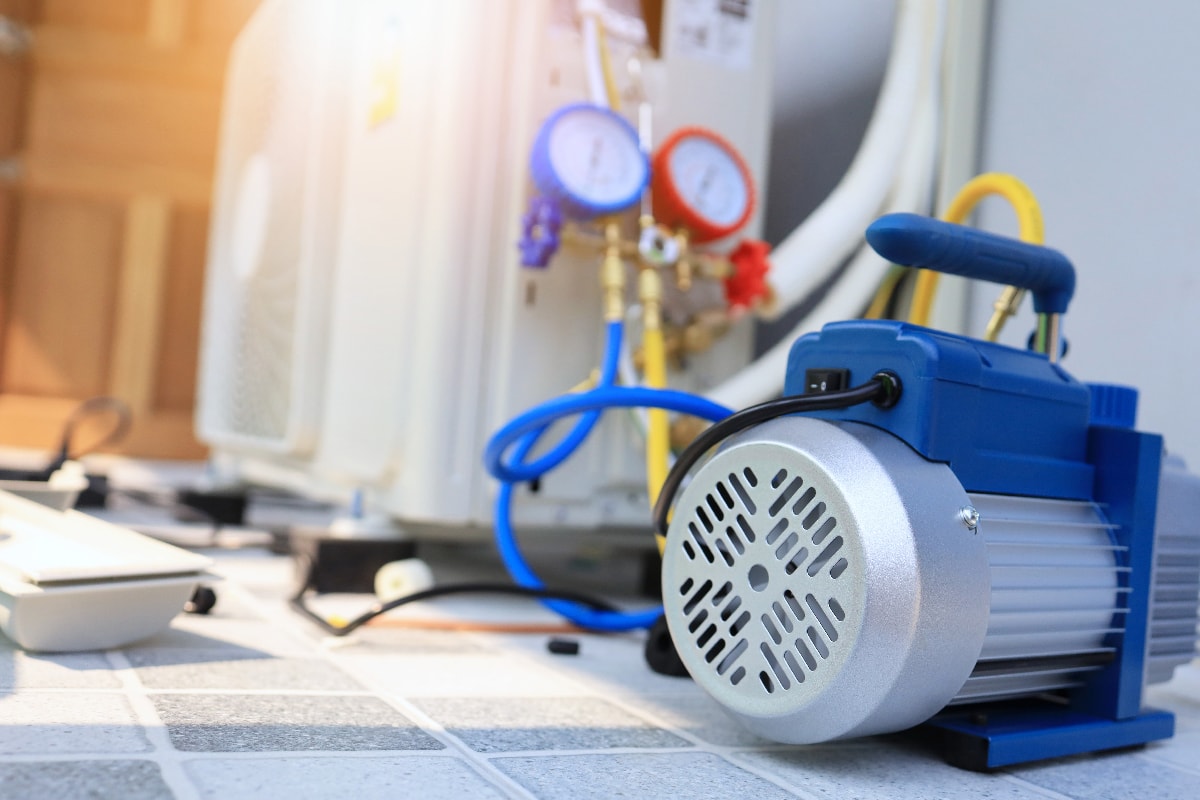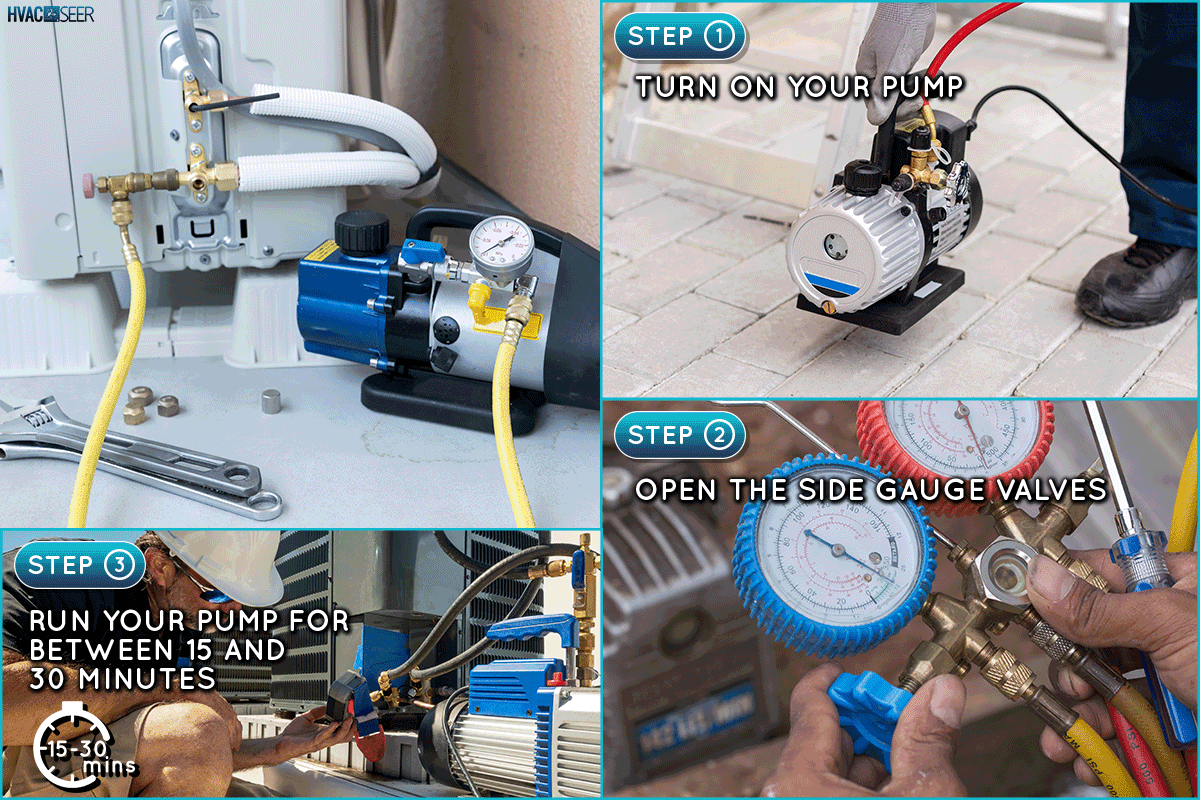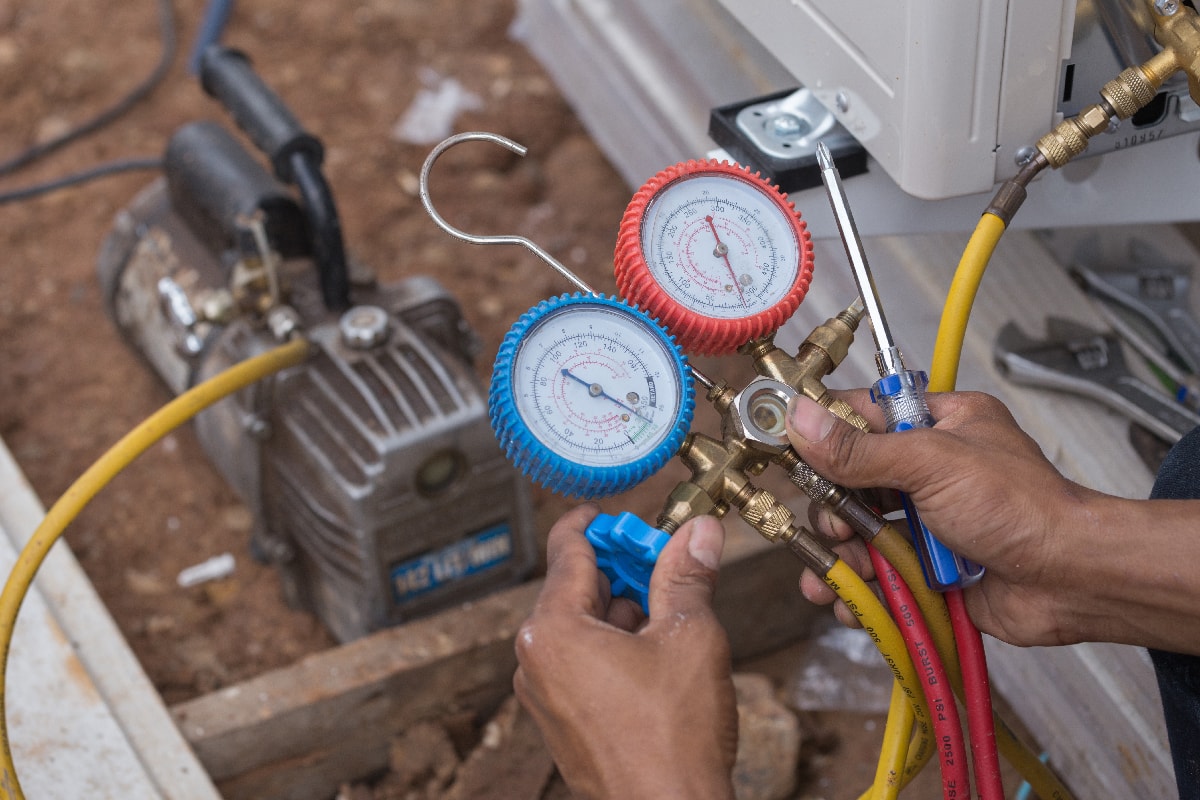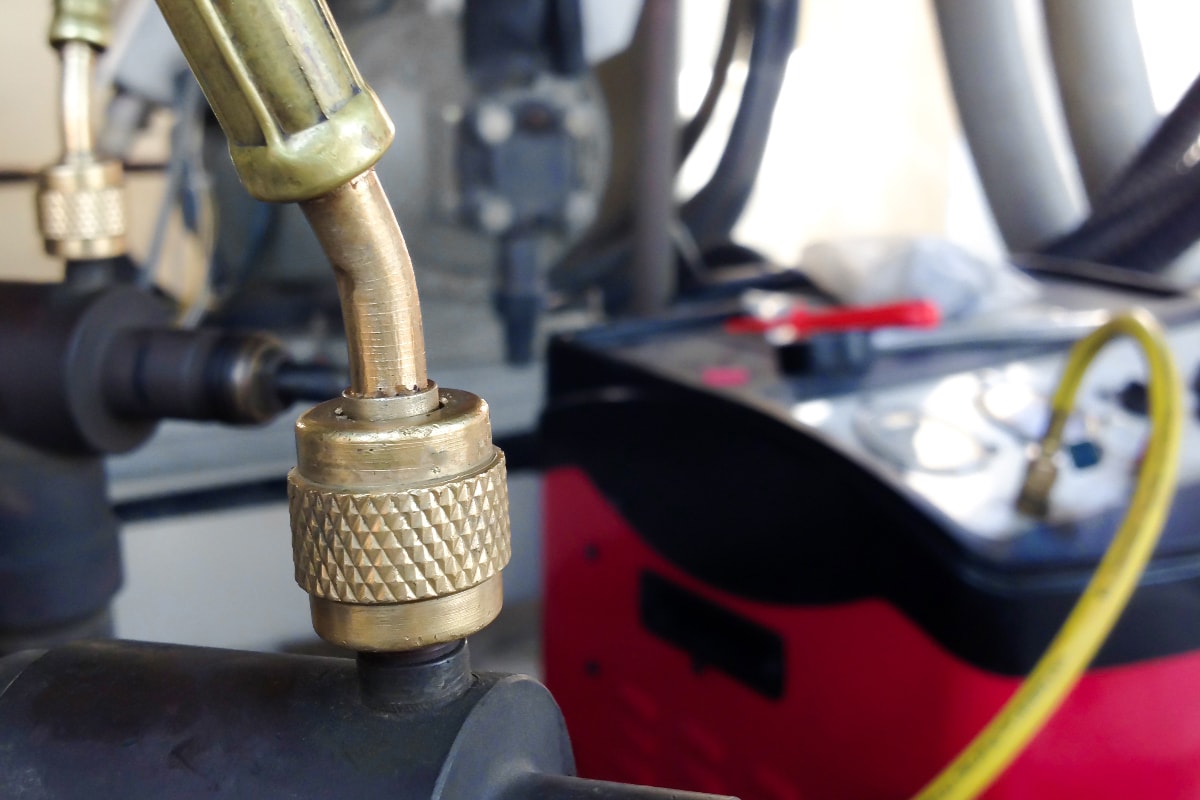Moisture inside your HVAC system can cause problems. This is where the HVAC vacuum pump comes in. It is an essential gadget that removes air, moisture, and debris from your AC system to prevent damage. But, how does it work? We researched to show you how.
The HVAC vacuum pump is an important gadget that ensures the air-conditioned air is not compromised. To know how it works, follow the steps below:
- Set up the vacuum pump
- Add vacuum oil to the pump
- Connect the gauges to the pressure ports of your AC system
- Open the manifold valves
- Run the vacuum pump
- Turn on your pump
- Open the side gauge valves
- Run your pump for between 15 and 30 minutes
- Close the vacuum pump
- Close the valve on the lower side and hold the vacuum for 15 minutes
- Shut your vacuum pump
- Disconnect the vacuum
Keep reading to learn the steps of how to vacuum pump your AC system. Besides, find out the reasons for vacuuming. Also, learn how much it costs to call a professional.
How To Use The HVAC Vacuum Pump
When air, humidity, moisture, and debris find their way into your AC system, it may not work optimally. It can drastically reduce its efficiency, or in a worst-case scenario, lead to severe issues.

The HVAC vacuum pump can help remove all unwanted substances, including debris and contaminants from your AC system.
Vacuuming your AC system is best done by a professional. The steps below are a guide on how to use it to successfully remove all the unwanted matter inside your AC system:
Set Up The Vacuum Pump
You can find this HVAC vacuum pump on Amazon.
To use your vacuum pump like the one shown above, start by setting it up correctly in preparation to use it.
Step 1: Add Vacuum Oil To The Pump
Check out this vacuum pump oil on Amazon.
Fill up your pump with vacuum oil, ensuring you only use oil suitable for vacuum pumps. Using any other oil like mechanical oils can reduce the performance of the pump.
Unscrew the cap that’s on top of your pump, and pour the oil inside. There’s a limit indicated by a line. Therefore do not allow the oil to rise higher than the line marked inside. Afterward, replace the cap.
Step 2: Connect The Gauges To The Pressure Ports Of Your AC System

Take your gauge set and attach the blue gauge and hose to the low-pressure hose of your AC. Attach the red gauge to the high-pressure port of your AC.
Connect both gauges to the vacuum using the middle yellow hose. Ensure the gauges and gauge hoses are tightly connected. A loose connection can jeopardize the performance of your vacuum pump.
Step 3: Open The Manifold Valves
After connecting your gauges, you’ll have to use the valves in your AC system that open and close the ports to the refrigerant lines. So, leave the manifold valves open.
Run The Vacuum Pump

When you have connected everything securely, you can now run the pump.
Step 1: Turn On Your Pump
Switch on the pump and let it run. Starting it in cold weather can be a challenge, therefore, open the intake ports. Close it when it reaches the normal speed at which it runs.
Step 2: Open The Side Gauge Valves
After turning on the pump, open the side gauge valves. There’s one on each side of the gauge. By doing this, you allow the vacuum to pull out the air from the AC system.
If you are confused about which side to turn the valves, read the manual that comes with the gauges or vacuum pump.
Step 3: Run Your Pump for Between 15 And 30 Minutes
Once your pump is running, allow it to operate for 15 to 30 minutes. This will remove as much air as possible from the AC system. The amount of time you should run your pump depends on the manual instructions of the AC system and the vacuum pump.
In essence, the pump should run until the reading goes down to 1,000 microns, though you can try to get it down to 500 microns.
Close The Vacuum Pump

After running your pump, you have to close it.
Step 1: Close the Low-Side Valve And Hold Vacuum For 15 Minutes
When you are happy that your vacuum has run long enough to evacuate your AC, you can now close it. Close the valve attached to the low-side gauge, and allow the pump to hold the vacuum for 15 minutes.
If your pump cannot hold for this length of time, there’s a high chance your pump leaks. Take it to a professional, and if indeed it has a leak, they may replace some parts.
Step 2: Shut Your Vacuum Pump
Turn off the pump with the same mechanism you turned it on. Ensure you have disengaged the pump from the AC, before disconnecting it from the system.
Step 3: Disconnect The Vacuum

After disengaging completely, detach the hose that’s from the pump. At this juncture, your AC system is fully evacuated. Now, you can have it repaired or recharged.
Reasons To Vacuum Your AC System
Vacuuming your AC system is important if it is to operate optimally. This process removes moisture, air, debris, and dust, that can otherwise damage the AC system.
It is recommended to clean and vacuum your AC system at least once a year. The number of times you need to vacuum your system ideally depends on how many times you use it, and where you live. If you live close to the highway or industrial area, your AC system will get dirty much faster.
Another factor to consider is if the occupants in your home have allergy problems. If this is the case, you may need to vacuum the AC system more often.
The reasons for vacuuming your AC system include:
Your Home Was Recently Renovated
You should seal off the ducts when renovating your home. However, if for one reason or another it was never done, vacuuming the AC system is a solution.
Leaving the ducts open, means that the debris and dust will find their way into the ducts during the renovation. You will find out this after the renovations when you turn on the AC and the debris and dust are forced into your home.
It can be quite alarming if substances such as asbestos or paint particles find their way into your home. That is why your duct system should be vacuumed to remove these and the dust.
Remove Animals And Insects
Animals such as mice, raccoons, and even snakes can make your AC system their home. It is a good idea to remove these animals and afterward vacuum the ducts as you do not know what they could have left behind.
Get rid of mold
Mold can cause respiratory problems and allergies. It can also weaken your immune system. When you notice mold in your ducts, vacuum it immediately.
Remove Contaminants
All sorts of things can enter your AC system. When you start seeing pet hair being blown into the room, or strange odors emanating from the system, vacuuming can be an excellent solution.
Allergies And Illness
You may vacuum often due to home occupants suffering from allergies or respiratory illnesses.
Cost Of Vacuuming Your AC system

Vacuuming your AC is part of maintenance and is best done by a professional. A one-off visit costs between $65 and $200 if you have a small AC unit. You will be charged slightly more for maintenance visits based on contracts, ranging from $100 to $350. This price range is dependent on the number of visits.
However, you can save money if you know how to vacuum it yourself. It’s not very difficult to learn. But, if you are still not confident enough, you are better off paying a professional than making mistakes that will end up costing you a lot.
In Closing
Vacuuming is an important part of maintaining your AC system. This process removes moisture, air, debris, and all unwanted substances, which can damage your AC system.
To evacuate your AC system, you need to use a vacuum pump. It is not difficult to use, but if you cannot manage to do so on your own, call a professional.
To learn more about the HVAC vacuum pump, click on the links below:
Will A Vacuum Pump Evacuate Refrigerant
How Long AC System Hold Vacuum


